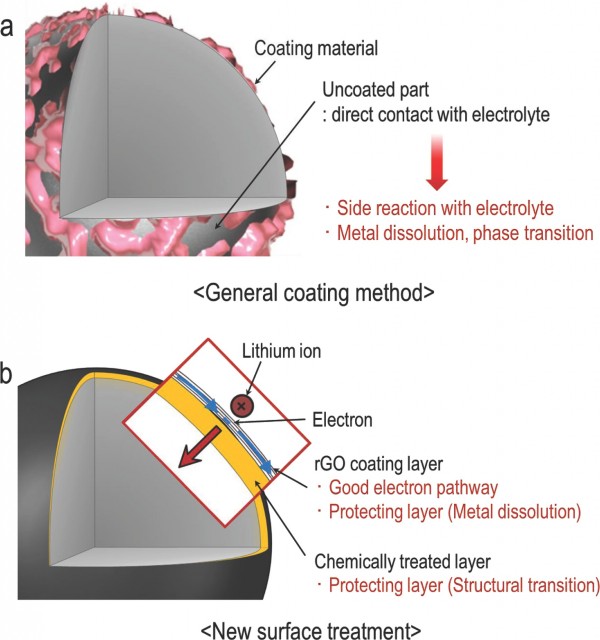A Novel Surface Treatment Method and New Insight into Discharge Voltage Deterioration for High-Performance 0.4Li2 MnO3–0.6LiNi1/3Co1/3Mn1/3O2 Cathode Materials
- Journal
- Advanced Energy Materials
- Vol
- 4
- Page
- 16
- Year
- 2014
The Li-rich cathode materials have been considered as one of the most promising cathodes for high energy Li-ion batteries. However, realization of these materials for use in Li-ion batteries is currently limited by their intrinsic problems. To overcome this barrier, a new surface treatment concept is proposed in which a hybrid surface layer composed of a reduced graphene oxide (rGO) coating and a chemically activated layer is created. A few layers of GO are first coated on the surface of the Li-rich cathode material, followed by a hydrazine treatment to produce the reducing agent of GO and the chemical activator of the Li2MnO3 phase. Compared to previous studies, this surface treatment provides substantially improved electrochemical performance in terms of initial Coulombic effiency and retention of discharge voltage. As a result, the surface-treated 0.4Li2MnO3–0.6LiNi1/3Co1/3Mn1/3O2 exhibits a high capacity efficiency of 99.5% during the first cycle a the discharge capacity of 250 mAh g−1 (2.0–4.6 V under 0.1C), 94.6% discharge voltage retention during 100 cycles (1C) and the superior capacity retention of 60% at 12C at 24 °C.

